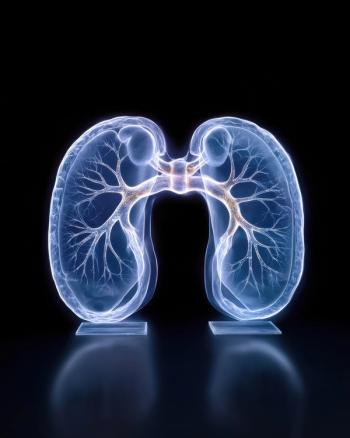
Richard Auchus, MD, PhD, discusses how crinecerfont is improving CAH care and easing the transition from pediatric to adult management.

Richard Auchus, MD, PhD, discusses how crinecerfont is improving CAH care and easing the transition from pediatric to adult management.

Higher maternal vitamin D in early pregnancy linked to better fluid and overall cognition in children, especially among those of Black mothers.

Results revealed students aged 10 to 13 years spent over 45 minutes on social media apps during school hours.

A minimum expiratory tidal volume of 4 mL/kg is associated with successful lung aeration during delivery room resuscitation of preterm neonates.

Discover essential nutrition tips for young athletes to enhance performance, hydration, and recovery before, during, and after sports activities.

FDA approves first generic iron sucrose injection for treating iron deficiency anemia in CKD patients 2 years and older.

Brensocatib was granted FDA priority review in February 2025 for the small molecule, oral, reversible inhibitor.

FDA accepts priority review of gepotidacin, a first-in-class oral antibiotic, for treating uncomplicated urogenital gonorrhea in patients ≥12 years.

Explore essential resources and toolkits for managing the ongoing stimulant medication shortage affecting ADHD treatment and patient care.

Hydration, timed voiding, and limiting bladder-irritating foods can help kids manage incontinence, says Aleece Fosnight, PA-C, in this Q+A interview.

Get caught up with Contemporary Pediatrics! This list helps you navigate our top stories from the week, all in one place.

Pediatricians empower families of children with disabilities by promoting ABLE accounts, enhancing financial security and access to essential resources.

Richard J. Wong, DO; and Tyra Bryant-Stephens, MD, outline strategies for controlling asthma as kids head back to school.

Back-to-school season impacts children's mental health. Discover strategies for parents to support emotional well-being and resilience in elementary students.

Manufacturer MannKind has submitted a supplemental Biologics Application to the FDA for its inhaled insulin Afrezza.

Can you guess the diagnosis?

Pharmacotherapy use for pediatric obesity rose after AAP’s 2023 guidelines, though overall rates remain low compared to nutrition counseling.

Findings may help guide clinicians and policymakers in balancing the risks and benefits of stimulant prescribing in adolescent populations, according to the study authors.

In this paper, we provide several cases of human bite injuries, juxtaposed with cases of bite injuries from common animals.

Pediatric experts emphasize the importance of asthma action plans, medication readiness, and school-based support to help children with asthma stay healthy and active during the academic year.

The expanded label of tocilizumab-anoh now includes treatment for patients aged 2 years and older with cytokine release syndrome (CRS).

The indication approved is for children aged 6 years and older who weigh at least 45 kg (99 lbs) for the preventive treatment of episodic migraine.

Though intensive nurse home services did not change outcomes in this South Carolina study, authors noted more research is needed on a larger scale to determine influence on adverse outcomes.

The authors of a recent study on flu-linked necrotizing encephalopathy in children present a deep dive into their findings and the biggest takeaways from the study.

As families prepare for a new school year, pediatricians are essential in helping parents navigate immunization schedules and school requirements and ensuring vaccine confidence.

A US study finds influenza-associated necrotizing encephalopathy in children has high mortality and disability, underscoring need for early care.

As families prepare for a new school year, pediatricians are essential in helping parents navigate immunization schedules and school requirements and ensuring vaccine confidence.

Despite their frequency, it can be challenging to distinguish between types of bites. Can you identify the source of this bite mark?

Get caught up with Contemporary Pediatrics! This list helps you navigate our top stories from the week, all in one place.

New CDC data show fewer kindergartners are fully vaccinated as exemption rates increased during the 2024-2025 school year.